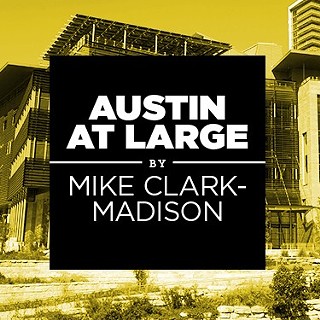Austin at Large: Counting Heads, Drawing Lines
Next year, when (if?) the current crises recede, we may be surprised at what we find
By Mike Clark-Madison, Fri., Sept. 18, 2020
This week's pair of News features details the labor that goes into some of the unexciting but critically important housekeeping of a democracy – ensuring that the federal census count of all Austinites, of all kinds, is as complete and accurate as possible, and ensuring that all Austinites are represented by our City Council. A prerequisite for the latter task is assembling a diverse panel of voters to redraw the 10 Council districts based on the results of that census; as prescribed by the City Charter, those who would like to serve have until Sept. 30 to apply.
Both of these housekeeping tasks, by definition, elevate the powerless against the powerful. The "hard to count," as the census takers describe them, are the marginalized, with less access to the tools of public participation, less knowledge of the importance of being counted, and often less trust in the government. That alienation is at peak levels in MAGA time, when cruelty against those outside the dominant culture is encouraged and celebrated by the white men in power. Getting involved and working to make the census complete is pushback.
The Pushback Is the Point
Because Austin's civic values are, at least nominally, the opposite of MAGA (the MAGAs seem to think so), city redistricting has the pushback built into the process. Back in 2012, Austin voters approved by large margins two different plans to replace the at-large Council – the 10-1 plan that we now use (which got more votes) and a plan that included a couple of at-large seats as well as districts, such as the Austin ISD Board of Trustees uses.
What the 10-1 plan also had that the other didn't was an elaborate proposal for an independent commission (the ICRC) to draw district lines without any political interference. At the time, at least some of its backers said that's what put it over the top; people who wanted to see the proposed map before they voted for single-member districts were mollified by the apparently incorruptible process for drawing them once 10-1 passed.
In hindsight, this all probably worked out as well as it needed to for that momentous assignment of drawing the first 10-1 districts. We'll know by this time next year if it proves too cumbersome for the decennial task of redrawing districts that are, in theory, not supposed to change that dramatically from their present form. Like the census complete-count organizers, the Office of the City Auditor has struggled to do the needed outreach in these plague times to engage an appropriately diverse and inclusive population of average citizens in the ICRC process; the rules, in various ways, discourage those who are already engaged and politically active from participating. Elements that were viewed as essential for ICRC 1.0 to be credible may seem like overkill going forward.
But Change Is Gonna Come
On the other hand, the district lines will change, and that will have an impact on how the next Council is arrayed on the issues. (Some members will be term-limited come 2022; busting that term limit via petition isn't a huge hurdle, except for the mayor's.) Even in the plague times, Austin continues its decades of inexorable growth – we've likely added at least a Council district's worth of residents since the last census. (We do not get to simply add an 11th district, as some cities can.) Those new Austinites have not been distributed evenly throughout the city. Our housing affordability strategies – and the larger land-use reform that seeks to enable them – acknowledge this as a problem that needs to be corrected, which has prompted its own pushback over gentrification, neighborhood preservation, and displacement.
Now, think about how that changes the calculus of redistricting. For all the hype about Downtown high-rises and larger-scale infill projects at Mueller and Highland and the Grove, Central Austin's population has not grown as fast as outlying areas. That would suggest that the current District 9 would have to expand geographically. Would that involve crossing I-35 and claiming historic East Austin neighborhoods that are now thoroughly gentrified? Or moving toward MoPac and picking up in-town neighborhoods that currently help make the more suburban districts less conservative than otherwise? How many current council members (other than D9 incumbent Kathie Tovo) would be swept into such a district?
Likewise, looking from the outside in, population growth may require that more than two districts lie completely outside the MoPac/U.S. 183/Ben White loop. Which current districts do we effectively abolish to make room for that? The answer has different implications looking at the north and west vs. the east and south. Assuming the new ICRC takes as its starting point the creation of (one) Black and (three) Latinx opportunity districts – as did ICRC 1.0 – the shape of those districts would likely follow the evident trends of these communities of color moving, or being driven, farther away from the city center.
This is all to say that these housekeeping processes, this counting of heads and drawing of lines, could prove to be a lot more earthshaking than they may seem now. With so many things competing for our attention now that seem much more life-altering, it's good that the people whose stories we tell this week are keeping an eye on that ball. Next year, when (if?) the plague may be gone and the MAGA era dismissed, we may be surprised by the outcomes of today's choices.
Got something to say? The Chronicle welcomes opinion pieces on any topic from the community. Submit yours now at austinchronicle.com/opinion.







